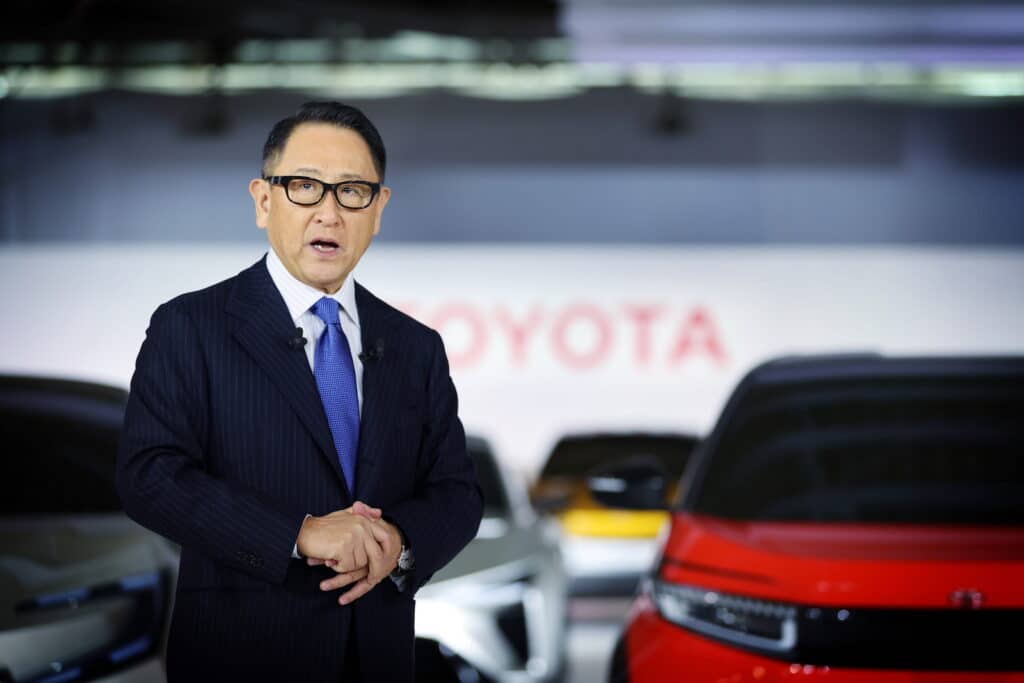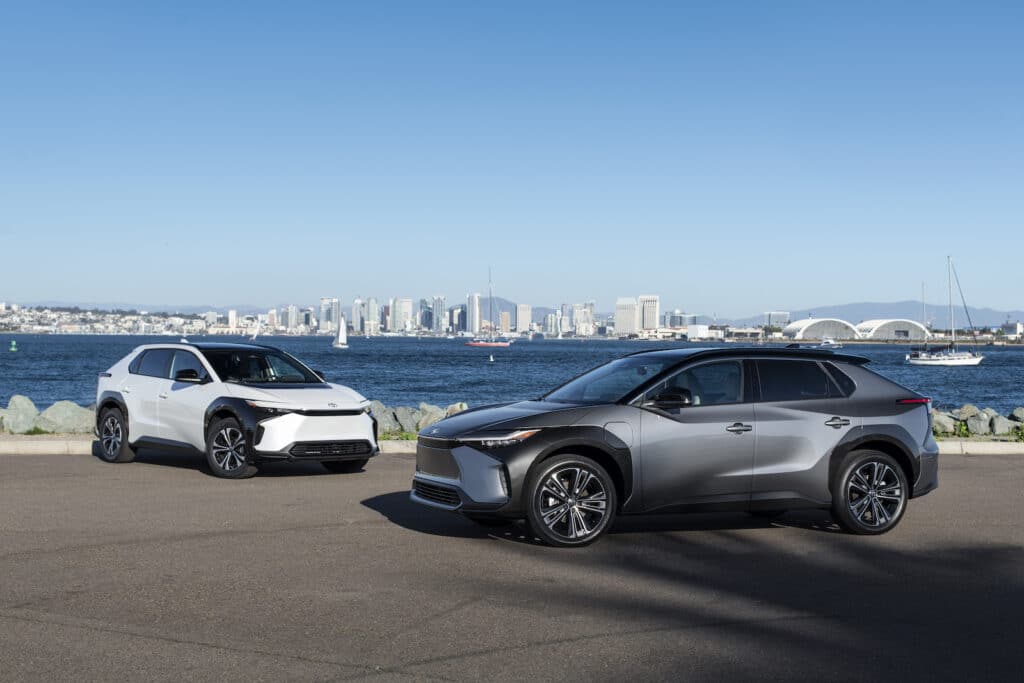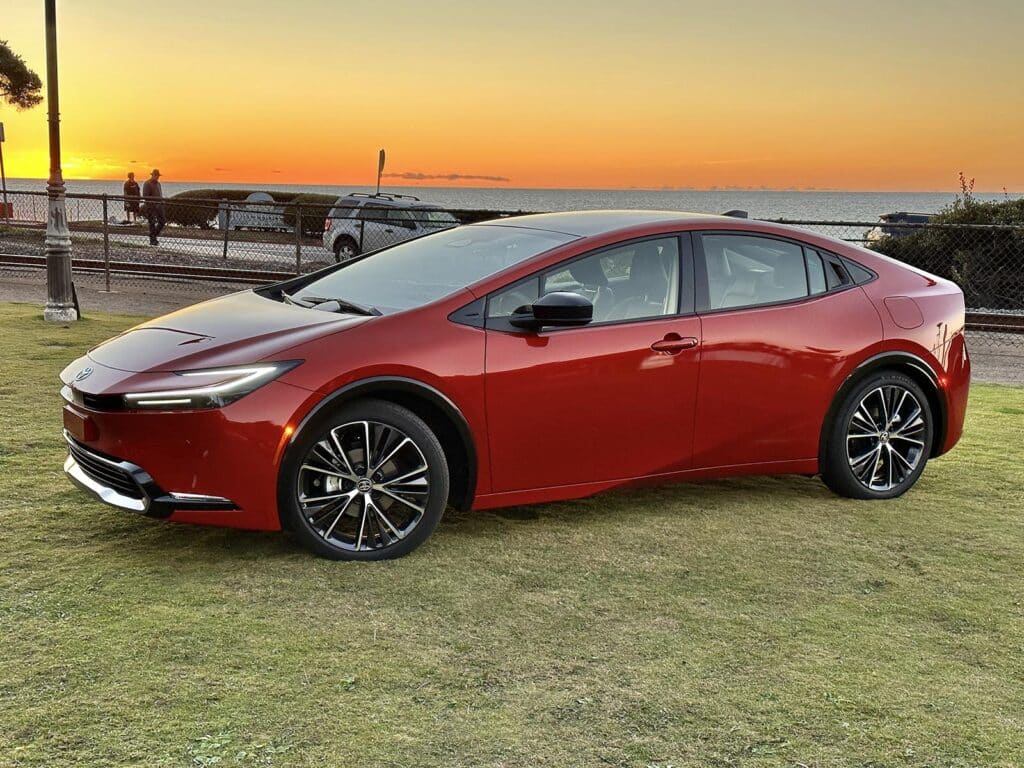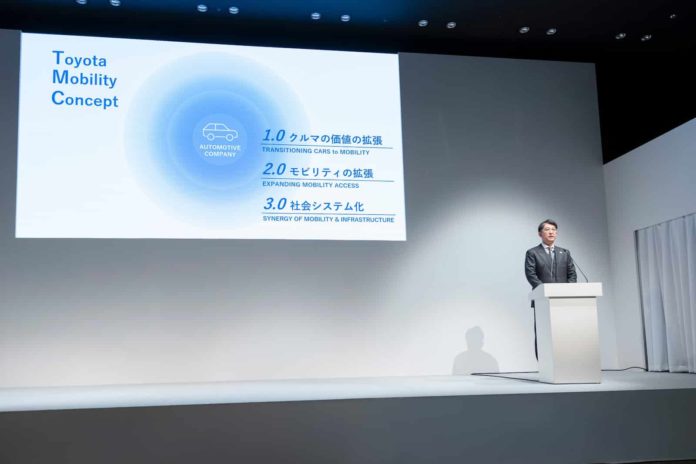With a new CEO in place who appears to be more focused on EVs than his predecessor, the world could get a sense of Toyota Motor Corp.’s new direction when it lifts the covers on its next-generation battery-electric vehicle in October.
During an earnings call on Wednesday, Chief Executive Koji Sato offered some insight into Toyota’s new EV strategy, revealing plans to increase spending by decade’s end to 5 trillion yen, or $36.9 billion at current exchange rates. That’s 1 trillion yen, or $7.39 billion, more than the plan set in motion by the recently retired Akio Toyoda.
While Toyota was a pioneer of electrification, Toyoda, the grandson of the automaker’s founder, was a skeptic when it came to all-electric models, preferring to emphasize hybrids, plug-in hybrids and hydrogen fuel-cell vehicles. But after facing criticism for the company’s first two long-range EVs, Toyoda launched an internal study to rethink the company’s strategy. And the concept vehicle set to debut at the Japan Mobility Show is meant to show the new direction being taken by CEO Sato.
“Rather than explaining in words, we thought it was much better to have you see the concept models and give us your feedback,” Chief Technology Officer Hiroki Nakajima said during Wednesday’s briefing.
New EV brings new thinking
Boosting the EV budget is only one of the changes Toyota is making. As a result of the study launched last year, the carmaker reportedly put on hold work on some of the future EVs it was already developing. Among other things, Toyota is expected to shift away from the architecture that underpins its first two long-range models, the Toyota bZ4X and Lexus RZ.

It’s also expected to rethink the mix of all-electric products former chief executive Toyoda highlighted during a December 2021 webcast.
During this Wednesday’s presentation, his successor teased the concept vehicle coming this autumn, indicating it will reach production in 2026. A schematic he showed revealed a wedge-shaped design with a long wheelbase, steeply raked windshield and a fastback roofline, according to Automotive News.
Future EVs, Toyota officials explained, will yield “greater efficiency” while also designed to “set hearts racing.”
Almost to the end of his tenure, Akio Toyoda was one of the industry’s biggest skeptics when it came to battery-electric vehicles. He questioned their environmental benefits, suggesting hybrids and hydrogen vehicles were more beneficial. He went so far as to warn that a complete switch to EVs could destroy the Japanese auto industry.

But critics argued that Toyoda had the argument upside-down and that Toyota, in particular, was at risk if it didn’t try to take a lead in the emerging EV market.
Whether or not Toyoda’s concerns might prove valid, the automaker has grown increasingly out of step with the rest of the industry. In China, the world’s largest automotive market, sales of EVs are rapidly growing and, in the process, that’s helped domestic manufacturers challenge foreign brands like Toyota, General Motors and Volkswagen. Then there’s Tesla whose CEO Elon Musk wants to position the EV maker as one of the world’s biggest manufacturers by the end of the decade.
Making a bigger commitment
Catching up will be on the shoulders of Sato, the former Lexus chief, who took on his new role April 1. During his Wednesday presentation he outlined a three-part strategy intended to position Toyota as a leader.
That includes the opening of what he described as the “BEV Factory,” specifically focused on electric vehicle development. But Toyota doesn’t simply want to add more models to its line-up. It wants to accomplish with EVs what it once did with the launch of the game-changing Toyota Manufacturing System. That revolutionized the way vehicles are built, yielding both higher quality and sharply reduced production costs.

Tesla has made it a priority to rethink the way EVs are built — something that has shown up in the upstart brand’s strong earnings.
“We will have a wholesale change of the manufacturing process,” Nakajima emphasized, adding, “The key point will be how to reduce cost. The manufacturing process itself will be totally changed. Through very drastic improvements, we would like to reduce costs.”
Eventually, Toyota hopes to halve the investment needed to bring its new products to market. But it also wants to find ways to double range without having to double the size of its EV’s battery packs.
Toyota is finishing up the first stage of Sato’s plan with the launch of the bZ4X and RZ battery-electric vehiclkes. It’s now entering a second phase focused on learning how to build better EVs more efficiently. The launch of the next-generation EV in 2026 will mark the start of the third phase.
By 2030, Toyota now expects to be selling 3.5 million EVs worldwide. But based on current sales targets, that would make up barely a third of its global total. Even as the automaker works to make its battery-electric cars more appealing and efficient, Sato isn’t completely abandoning his predecessor’s electrification strategy. He has indicated that hybrids, PHEVs and fuel-cell vehicles will remain a critical part of Toyota’s product mix well into the future.

